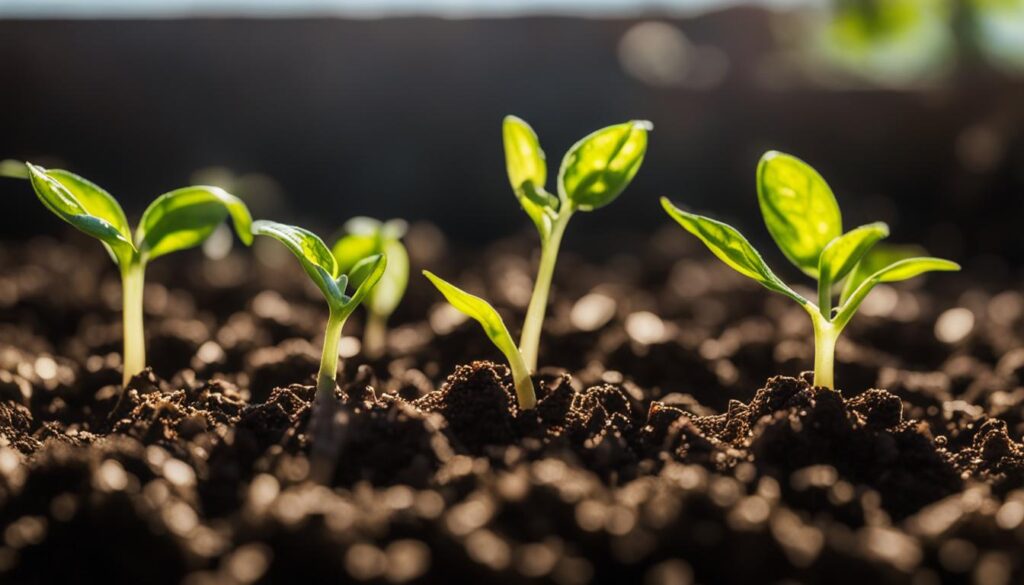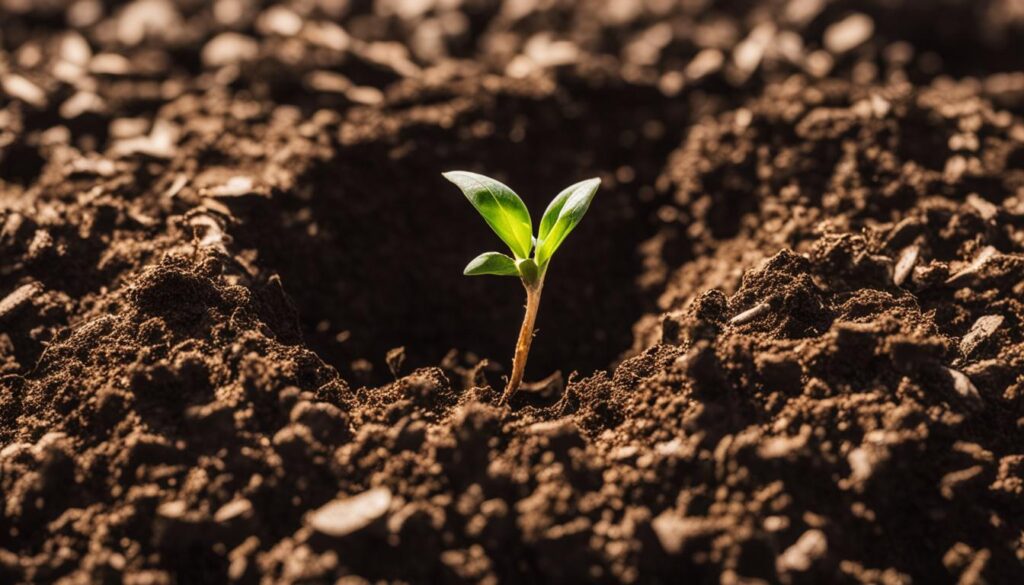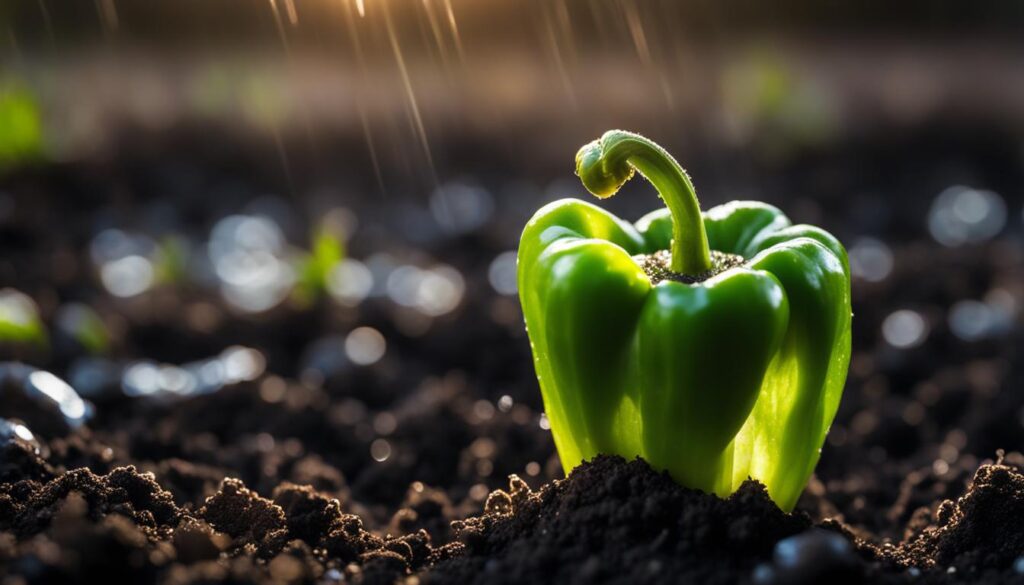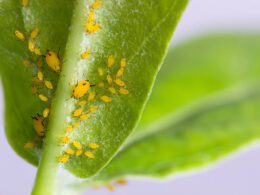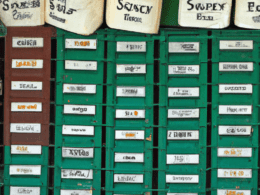Germinating pepper seeds can be a slow and frustrating process. However, by following some effective tips, you can speed up the germination process and ensure healthier pepper plants. Let’s explore some tried-and-true techniques for faster germination.
Post Summary
- Proper seed storage is crucial for optimal germination.
- Test the viability of your pepper seeds before sowing.
- Understanding pepper seed dormancy and breaking it can lead to quicker germination.
- Providing the ideal conditions, such as temperature and moisture, is essential for successful germination.
- Additional tips like using a seed heating mat and a humidity dome can enhance germination rate.
Understanding Pepper Seed Germination Time
Pepper seeds are not created equal when it comes to germination time. Depending on the variety and conditions, pepper seeds can take varying amounts of time to sprout. While some seeds may germinate within 1-2 weeks, others, especially hotter varieties or older seeds, may require more patience. It is important to have realistic expectations and understand the factors that influence germination time to avoid frustration and disappointment.
Factors that can affect pepper seed germination time include seed freshness, seed quality, and environmental conditions. Fresh seeds from a reputable source tend to have higher germination rates and quicker sprouting times. On the other hand, older or improperly stored seeds may have lower viability and longer germination times. Additionally, the germination rate can also be influenced by external factors such as temperature, humidity, and soil moisture levels.
To ensure a successful germination process, it is essential to provide the optimal conditions for pepper seeds. This includes maintaining a warm soil temperature between 70-90°F (21-32°C), providing consistent moisture without waterlogging the seeds, and ensuring proper ventilation. By understanding the influence of these factors, you can better plan and optimize your seed starting process for faster and more reliable germination.
Remember, each variety of pepper seed is unique, and it is normal for some seeds to take longer to germinate than others. Patience and careful attention to the seed’s needs will ultimately result in healthier, productive pepper plants.
Factors Affecting Pepper Seed Germination Time
There are several key factors that influence the germination time of pepper seeds. These include:
- Seed freshness: Fresh seeds tend to have higher germination rates and quicker sprouting times.
- Seed quality: Seeds from a reputable source are more likely to have higher viability and faster germination.
- Environmental conditions: Factors such as temperature, humidity, and soil moisture levels can significantly impact germination time.
It is important to consider these factors when starting pepper seeds to ensure optimal germination rates and reduce the waiting time for your plants to emerge.
Average Germination Time for Common Pepper Varieties
| Pepper Variety | Average Germination Time |
|---|---|
| Bell Peppers | 7-14 days |
| Jalapeno Peppers | 10-14 days |
| Habanero Peppers | 14-21 days |
How To Test Pepper Seed Viability
Before speeding up the germination process, it’s crucial to ensure that your pepper seeds are viable. You can test the viability of your seeds using simple methods like the soaking test or the paper towel test.
Soaking Test: To perform the soaking test, fill a container with water and place your pepper seeds in it. Let them soak for about 12 to 24 hours. After the designated time, observe if the seeds sink to the bottom of the container. Seeds that sink are likely to be viable and have a higher germination rate. Seeds that float should be discarded as they are less likely to germinate successfully.
Paper Towel Test: The paper towel test involves placing pepper seeds on a damp paper towel and sealing them in a plastic bag. Keep the bag in a warm location, such as near a sunny window or on top of a seedling heat mat. Check the seeds daily to see if they begin to germinate. If the majority of seeds show signs of germination within a week, they are considered viable.
| Method | Advantages | Disadvantages |
|---|---|---|
| Soaking Test | – Simple and easy – Provides quick results |
– Not suitable for seeds with hard shells – Risk of over-soaking seeds |
| Paper Towel Test | – Allows close observation of germination – Suitable for most seed types |
– Requires daily monitoring – Can be time-consuming |
By conducting these tests, you can identify the seeds that are most likely to sprout and save time and effort when sowing. This ensures that you are only investing in viable seeds, increasing your chances of a successful germination rate and healthy pepper plants.
Proper Seed Storage for Optimal Germination
When it comes to speeding up pepper seed germination, proper seed storage is essential. Storing your pepper seeds correctly helps maintain their viability and increases the chances of successful germination. Follow these guidelines to ensure optimal seed storage:
- Choose the right container: Store your pepper seeds in a cool, dry, and airtight container. Avoid using plastic bags, as they can trap moisture and lead to seed damage.
- Add desiccants: To absorb excess moisture and prevent seed damage, consider adding a desiccant like silica gel or powdered milk to the storage container.
- Label and date: Properly label your seed containers with the pepper variety and the date of collection or purchase. This helps you keep track of seed age and ensures you use the oldest seeds first.
- Store in a cool location: Find a cool and dark spot for storing your seed containers. Avoid areas that are prone to temperature fluctuations or direct sunlight.
By following these seed storage practices, you can extend the shelf life of your pepper seeds and enhance their germination potential. Remember to check the viability of your stored seeds periodically by conducting seed viability tests, such as the soaking test or the paper towel test, before sowing.
| Storage Tips | Benefits |
|---|---|
| Use airtight containers | Prevents moisture and air exposure |
| Add desiccants | Absorbs excess moisture |
| Label and date containers | Keeps track of seed age |
| Store in a cool location | Preserves seed viability |
“Proper seed storage is crucial for maintaining seed viability and ensuring successful germination. By providing the right conditions, you can preserve the quality of your pepper seeds and improve your overall germination rate.”
Breaking Seed Dormancy for Quicker Germination
To accelerate the germination process of your pepper seeds, it’s essential to understand and address seed dormancy. Pepper seeds have a natural dormancy period that prevents them from sprouting until conditions are favorable. By employing specific techniques, you can break seed dormancy and promote faster germination.
Techniques to Break Seed Dormancy:
- Soaking the Seeds: Soaking pepper seeds in water or a mild solution can help soften the seed coat and trigger germination. Place the seeds in a container with water or a weak chamomile tea solution and allow them to soak overnight. This process can enhance water absorption and facilitate germination.
- Providing Optimal Soil Temperature: Pepper seeds require a warm soil temperature for efficient germination. Keep the planting area consistently between 70-90°F (21-32°C) to create the ideal conditions for the seeds to break dormancy and sprout.
- Ensuring Adequate Moisture Levels: Proper moisture is crucial for breaking seed dormancy. Make sure the soil is evenly moist but not saturated. Use a spray bottle to mist the soil surface if necessary, ensuring the seeds have access to the moisture they need to overcome dormancy.
By implementing these techniques, you can stimulate the germination process and reduce the time it takes for your pepper seeds to sprout. Remember to be patient and consistent with these methods, as breaking seed dormancy may take some time, depending on the variety and age of the seeds.
| Technique | Description | Effectiveness |
|---|---|---|
| Soaking the Seeds | Soaking pepper seeds in water or a mild solution to soften the seed coat and promote germination | Highly effective in breaking seed dormancy and speeding up germination |
| Providing Optimal Soil Temperature | Maintaining a warm soil temperature between 70-90°F (21-32°C) to create favorable conditions for germination | Crucial for breaking dormancy and ensuring successful germination |
| Ensuring Adequate Moisture Levels | Keeping the soil evenly moist, providing the necessary hydration for seeds to overcome dormancy | Essential for stimulating germination and preventing seed dehydration |
By following these techniques and understanding how to break seed dormancy, you can accelerate the germination process of your pepper seeds and set the stage for healthy and vigorous plants.
Optimal Conditions for Pepper Seed Germination
Creating the optimal conditions for pepper seed germination is crucial for success. Pepper seeds require warm soil temperatures ranging from 70-90°F (21-32°C) to germinate efficiently. You can use a seedling heat mat or place the seeds in a warm location, like on top of a refrigerator, to help maintain the ideal temperature. It is important to ensure that the temperature remains constant throughout the germination process to provide the best environment for seed development and growth.
Consistent moisture is also essential for pepper seed germination. The soil should be kept moist but not overly saturated. Overwatering can lead to seed rot, while underwatering can hinder germination. It is recommended to use a spray bottle to mist the soil regularly, keeping it evenly moist. This will provide the necessary moisture for seed activation and enhance overall germination rates.
In addition to temperature and moisture, using a high-quality seed starter mix can greatly benefit pepper seed germination. Seed starter mixes are specifically formulated to provide an ideal balance of nutrients, moisture retention, and aeration. These mixes create a favorable environment for seed development, ensuring a higher success rate. When filling seed trays or containers, make sure to use a seed starter mix that is well-draining yet retains enough moisture for the seeds.
Proper ventilation is another factor to consider for optimal germination. Good air circulation helps prevent the growth of mold and fungi, which can negatively impact seed germination. To ensure proper ventilation, you can lightly fan the seed trays or containers a few times a day. This will help refresh the air and promote healthier seedling development. Additionally, providing adequate ventilation can also help prevent damping-off disease, a common problem during the early stages of seed germination.
| Optimal Conditions for Pepper Seed Germination | Temperature | Moisture | Seed Starter Mix | Ventilation |
|---|---|---|---|---|
| Requirement | 70-90°F (21-32°C) | Consistent moisture | High-quality seed starter mix | Good air circulation |
“Creating the ideal conditions for pepper seed germination is crucial for successful and faster germination. By providing the right temperature, moisture, and ventilation, along with using a high-quality seed starter mix, you can optimize the germination process and increase the chances of healthy seedling development.”
Additional Tips for Faster Pepper Germination
When it comes to speeding up pepper seed germination, there are several additional tips you can follow to enhance the process. By implementing these strategies, you can increase your chances of achieving a faster and more reliable germination rate.
Using a Seed Heating Mat
A seed heating mat is a valuable tool that can help maintain the optimal soil temperature for pepper seed germination. These mats provide a consistent warmth that encourages quicker sprouting. Simply place the tray or container with your pepper seeds on the heating mat, following the manufacturer’s instructions for temperature settings. This technique can significantly enhance germination rates and promote healthier plant growth.
Introducing a Humidity Dome
Creating a humid environment can also contribute to faster pepper seed germination. One way to achieve this is by using a humidity dome. A humidity dome traps moisture around the seeds, creating a greenhouse-like effect that promotes optimal conditions for sprouting. Place the dome over your seed tray or container to maintain moisture levels and enhance germination rates. Remember to monitor the humidity regularly and provide ventilation as needed to prevent mold or damping-off.
Regularly Fanning the Seeds
Proper air circulation is crucial for successful germination. By regularly fanning your pepper seeds, you can refresh the air around them and prevent the risk of fungal diseases. Simply use a gentle handheld fan or your hand to create a light breeze over the seeds. This practice not only promotes healthy growth but also mimics the natural outdoor conditions that seeds would experience from wind.
Choosing the Right Seed Starter Mix
The choice of a suitable seed starter mix can make a significant difference in the germination process. Opt for a high-quality mix specifically formulated for seed starting. These mixes are often lightweight, well-draining, and sterile, providing the ideal environment for seeds to germinate. Avoid using heavy garden soil, as it can become compacted and hinder seedling development. Investing in a good seed starter mix can increase your chances of faster and more consistent germination.
| Additional Tips for Faster Pepper Germination |
|---|
| Use a seed heating mat |
| Introduce a humidity dome |
| Regularly fan the seeds |
| Choose the right seed starter mix |
Conclusion
In conclusion, optimizing pepper seed germination is crucial for successful and productive pepper plant growth. By implementing the right techniques and following effective tips, you can significantly reduce the germination time and increase the success rate of your pepper seeds.
To begin, it is essential to test the viability of your seeds using methods like the soaking test or the paper towel test. This step ensures that you are sowing only the most viable seeds, saving you time and effort in the long run.
Proper seed storage is another key factor in achieving optimal germination. Storing your pepper seeds in a cool, dry, and airtight container, along with the addition of a desiccant, helps maintain seed viability and extends their shelf life.
Breaking seed dormancy and creating optimal germination conditions are also crucial steps. Techniques such as soaking seeds and providing the right soil temperature and moisture levels play a significant role in accelerating the germination process.
By following these strategies and incorporating additional tips like the use of a seed heating mat, humidity dome, regular fanning, and specialized seed starter mix, you can further enhance germination rates and ensure a successful pepper seed starting experience.
With these insights, you are now equipped to speed up your pepper seed germination and grow healthy, productive pepper plants with optimal vigor.
FAQ
How long does it take for pepper seeds to germinate?
Pepper seeds can take varying amounts of time to germinate, depending on the variety and conditions. Some seeds can sprout within 1-2 weeks, while others may take longer.
How can I test the viability of my pepper seeds?
You can test the viability of your pepper seeds using methods like the soaking test or the paper towel test. The soaking test involves placing the seeds in water and observing if they sink, indicating viability. The paper towel test involves placing seeds on a damp paper towel and sealing them in a plastic bag to observe germination.
How should I store my pepper seeds for optimal germination?
Pepper seeds should be stored in a cool, dry, and airtight container. Adding a desiccant like silica gel or powdered milk can help absorb excess moisture and prevent seed damage.
How can I break seed dormancy for quicker germination?
Seed dormancy can be broken by soaking the seeds in water or a mild solution, providing the optimal soil temperature, and ensuring the right moisture levels.
What are the optimal conditions for pepper seed germination?
Pepper seeds require warm soil temperatures ranging from 70-90°F (21-32°C) to germinate efficiently. Additionally, providing consistent moisture, using seed starter mix, and ensuring proper ventilation are important.
Are there any additional tips for faster pepper germination?
Yes, using a seed heating mat, keeping the environment humid with a humidity dome, regular fanning to refresh the air, and planting seeds in a specialized seed starter mix can all promote faster and more reliable germination.
How can I speed up pepper seed germination?
By following effective tips such as testing seed viability, breaking seed dormancy, creating optimal germination conditions, and implementing additional tips, you can significantly reduce germination time and ensure a higher success rate for your pepper seeds.
How Can I Use Your Tips to Speed Up My Pepper Seed Germination Process?
To speed up the germination process of planting pepper seeds indoors, use a warm, moist environment. Try placing the seeds on a damp paper towel inside a sealed plastic bag, then keep the bag in a warm spot. This method can help stimulate faster germination for your pepper seeds.






